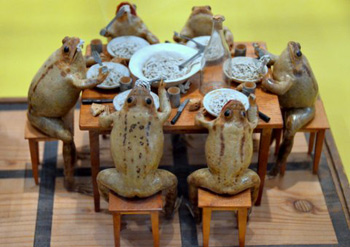
The Frog Museum, Estavayer-le-Lac, Switzerland
by Karin Leperi
Kermit the Frog from Sesame Street and Jeremy Fisher (a frog from the beloved Beatrix Potter book series) should best beware if they are ever in Switzerland. That is, unless these endearing childhood frog characters want to run the risk of being captured, gutted, and then stuffed with grains of sand – ultimately to be posed in humanesque-type poses doing very “unfroggy-like” things.
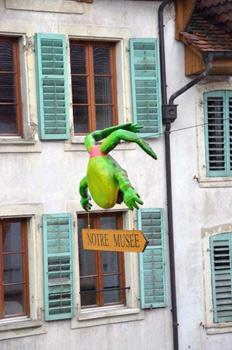 However, it’s not quite as dire as it sounds for Kermit and Jeremy Fisher as they have nothing to fear these days: The Frog Museum in Estavayer-le-Lac is not looking for new acquisitions. The fact of the matter is that the museum’s prized holdings were actually created in the 1850’s by an eccentric Napoleonic guard officer. Francois Perrier, reputedly an officer and a gentleman, had a fascination for frogs and collected them while on walks through the countryside. He also had too much time on his hands: Perrier would take his collection of frogs home, extract the innards through their mouths, and then stuff the hollow skin with sand, all the while modeling and dressing the frog corpses in uncanny human dioramas of scenes from everyday life.
However, it’s not quite as dire as it sounds for Kermit and Jeremy Fisher as they have nothing to fear these days: The Frog Museum in Estavayer-le-Lac is not looking for new acquisitions. The fact of the matter is that the museum’s prized holdings were actually created in the 1850’s by an eccentric Napoleonic guard officer. Francois Perrier, reputedly an officer and a gentleman, had a fascination for frogs and collected them while on walks through the countryside. He also had too much time on his hands: Perrier would take his collection of frogs home, extract the innards through their mouths, and then stuff the hollow skin with sand, all the while modeling and dressing the frog corpses in uncanny human dioramas of scenes from everyday life.
You can find the collection of all 108 stuffed frogs depicted in humanistic satirical scenes at the Frog Museum in Estavayer-le-Lac, a classic “stuck-in-medieval-times” town situated on the banks of Lake Neuchâtel. (It is also the largest lake within Switzerland’s borders). Located in the Fribourg Region, the heart of French-speaking Switzerland, the museum has helped put the town on the map – at least for foreigners. Eccentric and off-the-beaten path are all words that can easily describe the “froggy” contents of this museum.
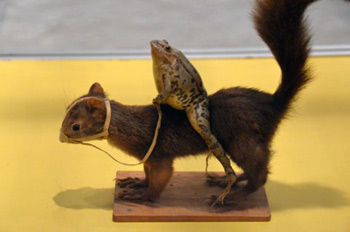 With that being said; nevertheless, there’s something compelling about a Swiss medieval town noted for its obsession with stuffed frogs (they are actually a tannish-brown instead of green) composed of skin and sand. Behind glass and meticulously preserved, the vignettes are parodies of human life in the 19th century. The frogs do human things like playing cards and dominoes, shooting billiards, feasting at a long table, eating spaghetti at a smaller table, getting a haircut at the barbershop, sitting at a desk in an old-fashioned schoolroom…and then there’s my favorite conundrum…a frog mounted on top of a squirrel, riding the furry rodent like a cavalry soldier might ride a horse.
With that being said; nevertheless, there’s something compelling about a Swiss medieval town noted for its obsession with stuffed frogs (they are actually a tannish-brown instead of green) composed of skin and sand. Behind glass and meticulously preserved, the vignettes are parodies of human life in the 19th century. The frogs do human things like playing cards and dominoes, shooting billiards, feasting at a long table, eating spaghetti at a smaller table, getting a haircut at the barbershop, sitting at a desk in an old-fashioned schoolroom…and then there’s my favorite conundrum…a frog mounted on top of a squirrel, riding the furry rodent like a cavalry soldier might ride a horse.
 Whether you reel back cautiously from the ludicrously odd or openly admire Perrier’s masterpiece of taxidermy and his tableau interpretations, one thing is for certain: It is an unusual tribute to anthropomorphic art and a social commentary on life in his times.
Whether you reel back cautiously from the ludicrously odd or openly admire Perrier’s masterpiece of taxidermy and his tableau interpretations, one thing is for certain: It is an unusual tribute to anthropomorphic art and a social commentary on life in his times.
Though dissonant, the museum’s artifacts also include a treasure trove of exhibits that document the history of the medieval town from the 15th century to the 1900s. Many of these were privately owned and then donated by local citizens to the museum for posterity. Somewhat more consistent with Perrier’s military role, the museum also includes a collection of Swiss armaments and battle regalia as well as 200 lamps which were used by the Swiss railways.
Of course, there are other frogs hanging around Estavayer, too. And while not stuffed and most are neither green nor brown, they appear to be made of paper-Mache. Strung on wire high above the town, they statically engage in gymnastic endeavors and the sorts, all the while dressed in a sundry of quirky get-ups. You can see them throughout your walks in this quaint town. Just look above.


If You Go:
Price of admission is $5.00 Swiss Franc, or about $5.32 U.S. dollars. Be sure to check the website for when the Frog Museum is open, as it changes with the seasons.
The Frog Museum (Le Musée des grenouilles)
Rue du Musée 13
1470 Estavayer-le-Lac
Tel. +41 (0)26 664 80 65
About the author:
Karin Leperi is an award winning writer and photographer with bylines in over 75 publications that include print, broadcast, and internet media. A gypsy at heart who particularly enjoys bucket-list experiences, she has traveled to 80 countries and is still counting. Specialties include travel, culture, cuisine, nature, adventure and lifestyle. Her photo website is: www.travelprism.com
Photo credits:
All photographs are by Karin Leperi.

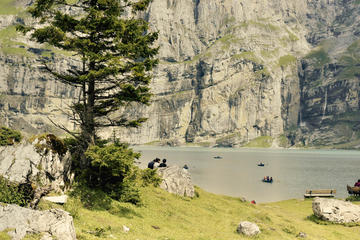
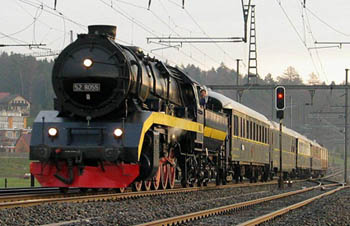
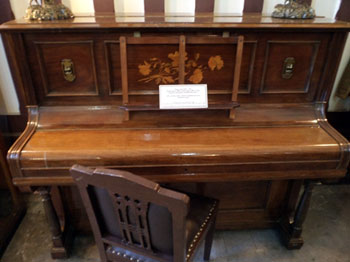 Composed of sleepers, a dining car and a baggage car, the train featured Lalique chandeliers, a piano and the finest crockery and cutlery. The maiden journey started on October 10th 1882 in Paris and reached Istanbul the next day. The menu consisted of no less than seven courses, oysters and turbot in green sauce included, not to mention fine wines and champagne. In 1977 the train ceased to have Istanbul as its final destination and in 2009 the Orient Express disappeared entirely from the time tables. Several other routes continue though and twice a year the historical trip is repeated, at a very stiff price!
Composed of sleepers, a dining car and a baggage car, the train featured Lalique chandeliers, a piano and the finest crockery and cutlery. The maiden journey started on October 10th 1882 in Paris and reached Istanbul the next day. The menu consisted of no less than seven courses, oysters and turbot in green sauce included, not to mention fine wines and champagne. In 1977 the train ceased to have Istanbul as its final destination and in 2009 the Orient Express disappeared entirely from the time tables. Several other routes continue though and twice a year the historical trip is repeated, at a very stiff price! The pink and white structure of the railway station is located in Eminönü on the shores of the Bosporus. Designed by German architect August Jachmund, it’s the best example of European Orientalism, combining elements of Ottoman architecture with modern amenities such as gas and later electric lighting and heating in winter.
The pink and white structure of the railway station is located in Eminönü on the shores of the Bosporus. Designed by German architect August Jachmund, it’s the best example of European Orientalism, combining elements of Ottoman architecture with modern amenities such as gas and later electric lighting and heating in winter.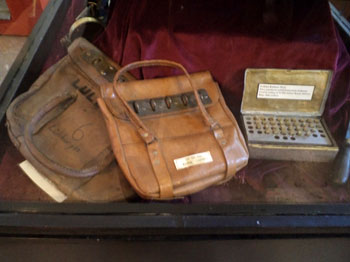 It’s only one room, but the museum documents the history of the Orient Express and the train station in detail. Old log books are displayed as are conductors’ uniforms, the piano, a table laid with the original cutlery and crockery, tickets and many more memorabilia. Photographs adorn the walls and examples of the technology of the time are on display too. I loved the newspaper clipping of when the train got stuck in a snow storm in Bulgaria, very reminiscent of the plot of Agatha’s novel. Admission is free and you are allowed to take as many photographs as you want.
It’s only one room, but the museum documents the history of the Orient Express and the train station in detail. Old log books are displayed as are conductors’ uniforms, the piano, a table laid with the original cutlery and crockery, tickets and many more memorabilia. Photographs adorn the walls and examples of the technology of the time are on display too. I loved the newspaper clipping of when the train got stuck in a snow storm in Bulgaria, very reminiscent of the plot of Agatha’s novel. Admission is free and you are allowed to take as many photographs as you want.
 As affluent Europeans started to descend upon romantic Istanbul, using the Orient Express, they needed an equally elegant place to rest their heads. The city was decidedly short of such type of establishment and that’s how the Pera Palace was conceived. The first super luxury hotel of Istanbul, located in fashionable Beyoglu (then called Pera) opened its door with an inaugural ball in 1892.
As affluent Europeans started to descend upon romantic Istanbul, using the Orient Express, they needed an equally elegant place to rest their heads. The city was decidedly short of such type of establishment and that’s how the Pera Palace was conceived. The first super luxury hotel of Istanbul, located in fashionable Beyoglu (then called Pera) opened its door with an inaugural ball in 1892.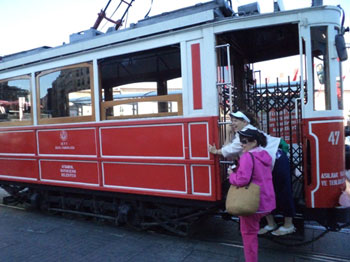 Not carried by a sedan but using the tramway running up and down Istaklal Street, I made my way on foot to the Pear Palace. The hotel was closed for nearly four years, undergoing extensive renovations but is now open again. No better place to get a feel for how people traveled in the past than sitting in the Orient Bar, enjoying a cocktail.
Not carried by a sedan but using the tramway running up and down Istaklal Street, I made my way on foot to the Pear Palace. The hotel was closed for nearly four years, undergoing extensive renovations but is now open again. No better place to get a feel for how people traveled in the past than sitting in the Orient Bar, enjoying a cocktail.
 One week didn’t seem like a lot of time, my host at the residency pointed out, after circumstances required I cut my stay by a week. But it turned out to be one of the most productive for my writing in a long time. The residency, located just outside Aureille, provided plenty of uninterrupted time for reading, thinking, and writing, all of which I did copiously.
One week didn’t seem like a lot of time, my host at the residency pointed out, after circumstances required I cut my stay by a week. But it turned out to be one of the most productive for my writing in a long time. The residency, located just outside Aureille, provided plenty of uninterrupted time for reading, thinking, and writing, all of which I did copiously.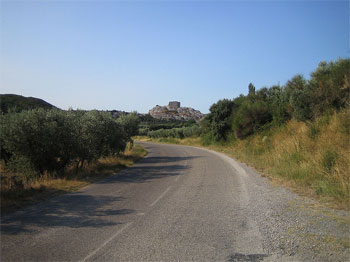 I spent my second day working on a short story, the concept for which I had been nursing for a while. The entire day, off and on, was spent working on this, and by the evening I was pleased to have finished the first draft. As I lay in bed that night, I contemplated how best to revise and improve my story. Falling asleep, however, did not follow naturally. My hosts keep no locks on their doors, since apparently in Aureille crime is practically unheard of. Unlocked doors always appear like an invitation to trouble for me and I braced the handle of my bedroom door with a chair and kept one of the lights burning to allow me a little peace of mind and some sleep.
I spent my second day working on a short story, the concept for which I had been nursing for a while. The entire day, off and on, was spent working on this, and by the evening I was pleased to have finished the first draft. As I lay in bed that night, I contemplated how best to revise and improve my story. Falling asleep, however, did not follow naturally. My hosts keep no locks on their doors, since apparently in Aureille crime is practically unheard of. Unlocked doors always appear like an invitation to trouble for me and I braced the handle of my bedroom door with a chair and kept one of the lights burning to allow me a little peace of mind and some sleep.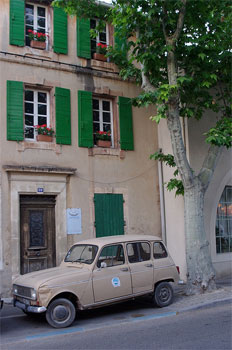 That evening the hosts held a dinner for the artists around the pool. They wanted to hear my story that I had unfortunately been unable to present at the conference in Wales, having fallen ill. The warm approval on everyone’s faces and their requests to hear the story I was currently working on at the residency even though it was unpolished told me that perhaps I do have something to offer as a writer.
That evening the hosts held a dinner for the artists around the pool. They wanted to hear my story that I had unfortunately been unable to present at the conference in Wales, having fallen ill. The warm approval on everyone’s faces and their requests to hear the story I was currently working on at the residency even though it was unpolished told me that perhaps I do have something to offer as a writer.
 The following morning it was time to leave the residency. As I disposed of the garbage from my apartment, Angela, a Northern Irish artist who was also staying at the residency, was standing outside drinking her morning coffee. She asked me for my last name and thanked me for having shared my short story with the other artists on Saturday evening. “I will look out for your name,” she told me.
The following morning it was time to leave the residency. As I disposed of the garbage from my apartment, Angela, a Northern Irish artist who was also staying at the residency, was standing outside drinking her morning coffee. She asked me for my last name and thanked me for having shared my short story with the other artists on Saturday evening. “I will look out for your name,” she told me.
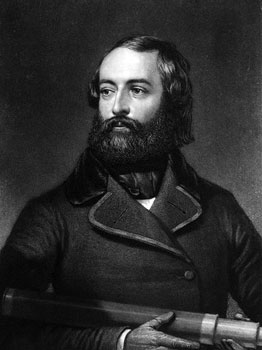 But on September 10, one day after it did so, we sailed into Rensselaer Bay, where in the mid-1850s, explorer Elisha Kent Kane spent two terrible winters trapped in the ice. And three days after that, as on Day Thirteen of our voyage we approached the island town of Upernavik, I went to the bridge. As the staff historian, I needed to announce the surprising news.
But on September 10, one day after it did so, we sailed into Rensselaer Bay, where in the mid-1850s, explorer Elisha Kent Kane spent two terrible winters trapped in the ice. And three days after that, as on Day Thirteen of our voyage we approached the island town of Upernavik, I went to the bridge. As the staff historian, I needed to announce the surprising news.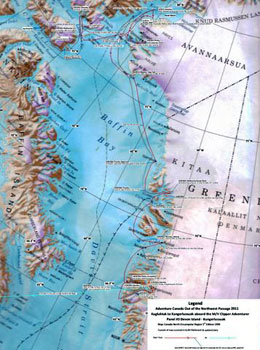 What drove me to the bridge was that our voyage had just become the first to trace Kane’s escape route from Rensselaer Bay to Upernavik, where Danish settlers welcomed the explorer, and now their posterity welcomed us.
What drove me to the bridge was that our voyage had just become the first to trace Kane’s escape route from Rensselaer Bay to Upernavik, where Danish settlers welcomed the explorer, and now their posterity welcomed us. The change gave us extra time. We hoped now to sail north through Smith Sound into Kane Basin. Perhaps we could reach Etah on the west coast of Greenland, situated at a northern latitude of 78 degrees 18 minute 50 seconds. Etah was as far north as Adventure Canada had yet ventured along “the American route to the Pole.”
The change gave us extra time. We hoped now to sail north through Smith Sound into Kane Basin. Perhaps we could reach Etah on the west coast of Greenland, situated at a northern latitude of 78 degrees 18 minute 50 seconds. Etah was as far north as Adventure Canada had yet ventured along “the American route to the Pole.”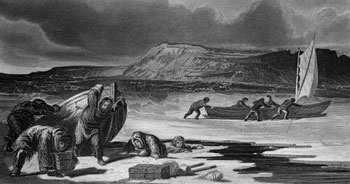 While most voyagers went ashore in zodiacs to explore beaches and ridges, five of us — an archaeologist, a geologist, an artist-photographer, an outdoorsman, and an author-historian (yours truly) — spent three hours searching small rocky islands for relics of Kane’s expedition. We found what I believe to be the remains of his magnetic observatory. And from the zodiac, prevented from scrambling onto slippery rocks by a receding tide, we spotted what I believe to be the site on “Butler Island” where Kane buried the bodies of two of his men.
While most voyagers went ashore in zodiacs to explore beaches and ridges, five of us — an archaeologist, a geologist, an artist-photographer, an outdoorsman, and an author-historian (yours truly) — spent three hours searching small rocky islands for relics of Kane’s expedition. We found what I believe to be the remains of his magnetic observatory. And from the zodiac, prevented from scrambling onto slippery rocks by a receding tide, we spotted what I believe to be the site on “Butler Island” where Kane buried the bodies of two of his men.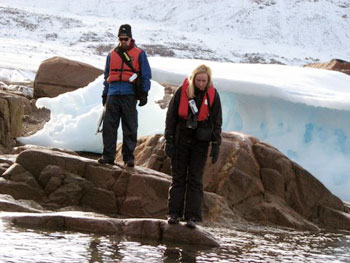 Ice conditions here have always been difficult and unpredictable. And in recent decades, recorded visits have been few. A 1984 article in Arctic magazine describes a study undertaken by scientists who helicoptered in from the American airbase at Thule to investigate the long-term decline in the caribou population. And an exhaustive archaeological study of northwest Greenland by John Darwent and others, detailed in Arctic Anthropology in 2007, turned up 1,376 features, including winter houses, tent rinks and burials — but sought and discovered no bodies in Rensselaer Bay.
Ice conditions here have always been difficult and unpredictable. And in recent decades, recorded visits have been few. A 1984 article in Arctic magazine describes a study undertaken by scientists who helicoptered in from the American airbase at Thule to investigate the long-term decline in the caribou population. And an exhaustive archaeological study of northwest Greenland by John Darwent and others, detailed in Arctic Anthropology in 2007, turned up 1,376 features, including winter houses, tent rinks and burials — but sought and discovered no bodies in Rensselaer Bay.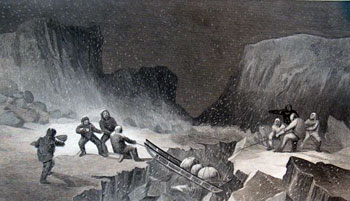 In Kane’s time, Etah was a permanent Inuit settlement, home to several extended families. Today, it serves as a temporary hunting camp. We stayed six hours and hiked to Brother John Glacier, a natural wonder that Kane, oblivious to Inuit nomenclature, named after his dead sibling.
In Kane’s time, Etah was a permanent Inuit settlement, home to several extended families. Today, it serves as a temporary hunting camp. We stayed six hours and hiked to Brother John Glacier, a natural wonder that Kane, oblivious to Inuit nomenclature, named after his dead sibling.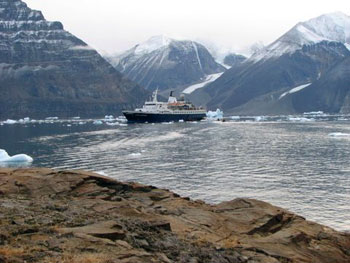 On the Clipper Adventurer, dining variously on Greenland halibut, veal marsala, and braised leg of New Zealand lamb, we retraced Kane’s perilous voyage in two days. We called in at Cape York, where the explorer overcame a last great barrier of protruding shore ice, and from there gazed out over open water.
On the Clipper Adventurer, dining variously on Greenland halibut, veal marsala, and braised leg of New Zealand lamb, we retraced Kane’s perilous voyage in two days. We called in at Cape York, where the explorer overcame a last great barrier of protruding shore ice, and from there gazed out over open water.

 After a few days of checking out the architecture in the bustling capital Bucharest, we board a train for Transylvania – one of the largest and most picturesque regions in the centre of Romania known for its historical mix of flavours of the old Austro-Hungarian Empire, Saxons and brief Ottoman rule.
After a few days of checking out the architecture in the bustling capital Bucharest, we board a train for Transylvania – one of the largest and most picturesque regions in the centre of Romania known for its historical mix of flavours of the old Austro-Hungarian Empire, Saxons and brief Ottoman rule. The Black Church (Biserica Neagra) towers in its dusky beauty in Council Square. Called St. Mary’s from the time the first stone was laid in 1385, until it was renamed in 1689 after its walls were blackened by the “Great Fire” that levelled most of the town. Five richly decorated portals grace the outside. On the inside over 100 Persian rugs are hung from the walls (given to the church by Saxon merchants returning from shopping-sprees to Ottoman lands). In 1839 a 4000-pipe organ was installed. It is a thrill to hear it being played; its thunderous chords setting off tremors in the air waves.
The Black Church (Biserica Neagra) towers in its dusky beauty in Council Square. Called St. Mary’s from the time the first stone was laid in 1385, until it was renamed in 1689 after its walls were blackened by the “Great Fire” that levelled most of the town. Five richly decorated portals grace the outside. On the inside over 100 Persian rugs are hung from the walls (given to the church by Saxon merchants returning from shopping-sprees to Ottoman lands). In 1839 a 4000-pipe organ was installed. It is a thrill to hear it being played; its thunderous chords setting off tremors in the air waves. Vlad III was the ruling prince of the Romanian state of Walachia from 1456-62, and from 1476-77, who offered a strong resistance to the westward expansion by the Ottoman Turks. His moniker Dracula was inherited; it means “son of the dragon” after his father Vlad II Dracul, who was a knight in the Order of the Dragon established to protect Christianity in the land. The symbol of this medieval order was a dragon, or “dracul” which at the time had a positive import, but after the 5th century became a symbol for the Devil. Vlad III’s infamy and his acquired moniker “Tepes” or Impaler, arose from his inhumane method of dealing with his enemies; foreign invaders and also rebellious countrymen, including noblemen (along with their families) who he felt were traitors and conspirators in the death of his father and brother. It is said dozens at one time were skewered on a wooden stakes in such a manner that instead of instant death, the victims suffered excruciating pain for up to 48 hours before their earthly farewell. It is believed that Vlad Tepes never set foot in Bran Castle….but there is a historic mention of his troops passing through Bran in 1459, and if going along on military manoeuvres was the Count’s modus operandi…who knows?
Vlad III was the ruling prince of the Romanian state of Walachia from 1456-62, and from 1476-77, who offered a strong resistance to the westward expansion by the Ottoman Turks. His moniker Dracula was inherited; it means “son of the dragon” after his father Vlad II Dracul, who was a knight in the Order of the Dragon established to protect Christianity in the land. The symbol of this medieval order was a dragon, or “dracul” which at the time had a positive import, but after the 5th century became a symbol for the Devil. Vlad III’s infamy and his acquired moniker “Tepes” or Impaler, arose from his inhumane method of dealing with his enemies; foreign invaders and also rebellious countrymen, including noblemen (along with their families) who he felt were traitors and conspirators in the death of his father and brother. It is said dozens at one time were skewered on a wooden stakes in such a manner that instead of instant death, the victims suffered excruciating pain for up to 48 hours before their earthly farewell. It is believed that Vlad Tepes never set foot in Bran Castle….but there is a historic mention of his troops passing through Bran in 1459, and if going along on military manoeuvres was the Count’s modus operandi…who knows? Built in 1377 it was mainly a fortress over the centuries to protect Romanian borders. In the early 20th century the town of Brasov gave the castle to Queen Marie of Romania. She absolutely loved each of its 57 rooms and she made it a summer retreat for her family of six children and King Ferdinand, when he wasn’t called away with kingly duties. She hired Czech architect, Karel Liman who imparted the castle with its romantic appeal and added to the comfort with heating stoves of Saxon tile, running water, electricity, three telephones and an elevator.
Built in 1377 it was mainly a fortress over the centuries to protect Romanian borders. In the early 20th century the town of Brasov gave the castle to Queen Marie of Romania. She absolutely loved each of its 57 rooms and she made it a summer retreat for her family of six children and King Ferdinand, when he wasn’t called away with kingly duties. She hired Czech architect, Karel Liman who imparted the castle with its romantic appeal and added to the comfort with heating stoves of Saxon tile, running water, electricity, three telephones and an elevator. We make our way up creaky wooden staircases, through narrow passage carved into the rock, and in and out of the high-ceilinged rooms, several of which overlook the courtyard dotted with potted red geraniums to enliven the castle’s sombre tones. Queen Marie’s bedroom and study are restored with ornate hand-carved furnishings, but not in the least opulent. The combined music room and library converted from an old attic is the largest room, and is as cozy as this stone edifice can be with a fireplace, a bear-hide rug and padded furniture.
We make our way up creaky wooden staircases, through narrow passage carved into the rock, and in and out of the high-ceilinged rooms, several of which overlook the courtyard dotted with potted red geraniums to enliven the castle’s sombre tones. Queen Marie’s bedroom and study are restored with ornate hand-carved furnishings, but not in the least opulent. The combined music room and library converted from an old attic is the largest room, and is as cozy as this stone edifice can be with a fireplace, a bear-hide rug and padded furniture.
 It is then on to Rasov, well at least to the bottom of the hill where it is perched, as the fortress was closed to renovations. Leaving the town of Rasov, Maxim points and says, “Gypsies”. We pass a rickety canvas-covered wagon pulled by two hefty steeds. A swarthy young man in a wide-brimmed hat jiggles the reins from the driver’s seat. His dark good looks are matched in the gypsy woman we later encounter. Alas, the romanticised lore of the Roma being free-spirited nomads is far from true – strong-spirited would be more fitting.
It is then on to Rasov, well at least to the bottom of the hill where it is perched, as the fortress was closed to renovations. Leaving the town of Rasov, Maxim points and says, “Gypsies”. We pass a rickety canvas-covered wagon pulled by two hefty steeds. A swarthy young man in a wide-brimmed hat jiggles the reins from the driver’s seat. His dark good looks are matched in the gypsy woman we later encounter. Alas, the romanticised lore of the Roma being free-spirited nomads is far from true – strong-spirited would be more fitting.
